The approach to Sandfield Cemetery is its finest feature. To find the sign, you’ll be driving along Grand Mira North Road, either south from Marion Bridge, or north from Huntington and the Two Rivers Wildlife Park. You’ll turn off the highway, and onto a long rutted road hemmed in by tall trees. It looks like a straightforward detour, and indeed, it’s less than a kilometer to the cemetery on the hill. But the trees press in claustrophobically, and as your car climbs, you arrive at one, then another, then a third fork in the road. All the forks are unmarked, all the roads equally foreboding. Which way will you choose?
In truth, it’s hard to get lost, but if you’re in the spirit of gravespotting, and if you arrive at the right time of day (or night), the approach to Sandfield will be truly memorable. My traipsing team and I arrived mid-afternoon on a hot, bright day, so there wasn’t much chance of a scare, unless you’re terrified of mosquitoes.
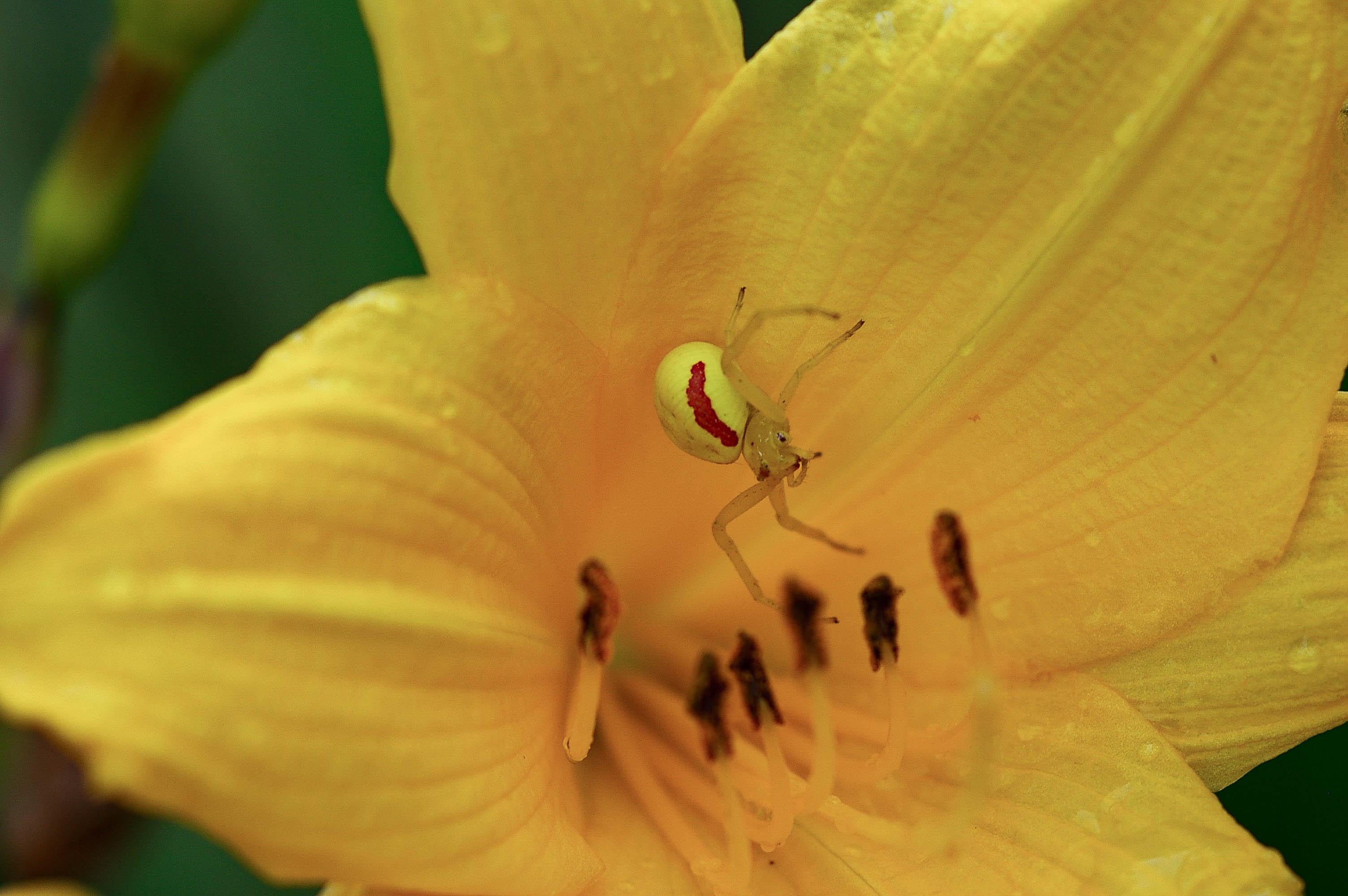
We also found this goldenrod crab spider, well camouflaged in a yellow daylily. Boo!
Sandfield is neither sandy, nor in a field. It’s named for the community of Sandfield, which probably wasn’t named for John Sandfield MacDonald, the first premier of Ontario, but who knows? As my gravebuddy Whitney Fawn observed, there seem to be a lot of “-Field” names along that stretch of the Mira, although not that many actual fields. The woods are plentiful, and spots like this cemetery perfectly combine a closed-in, private feel with a splendid view of Cape Breton’s most song-worthy body of water.
Surrounded as it is by water and bungalows (all those other forks lead to fences or “Private Property” signs), Sandfield Cemetery does not have much room to expand, but by the looks of things it never needed it. Boasting about 100 graves with a wide range of dates, this looks to be the kind of cemetery that inters in death only those precious few who knew about it in life. About half of the grounds were freshly mowed, while the rest was overrun with wild grasses that swiftly swallowed up my four-year-old. Someone, clearly, is keeping the grounds, but only when the time (or mood) permits.
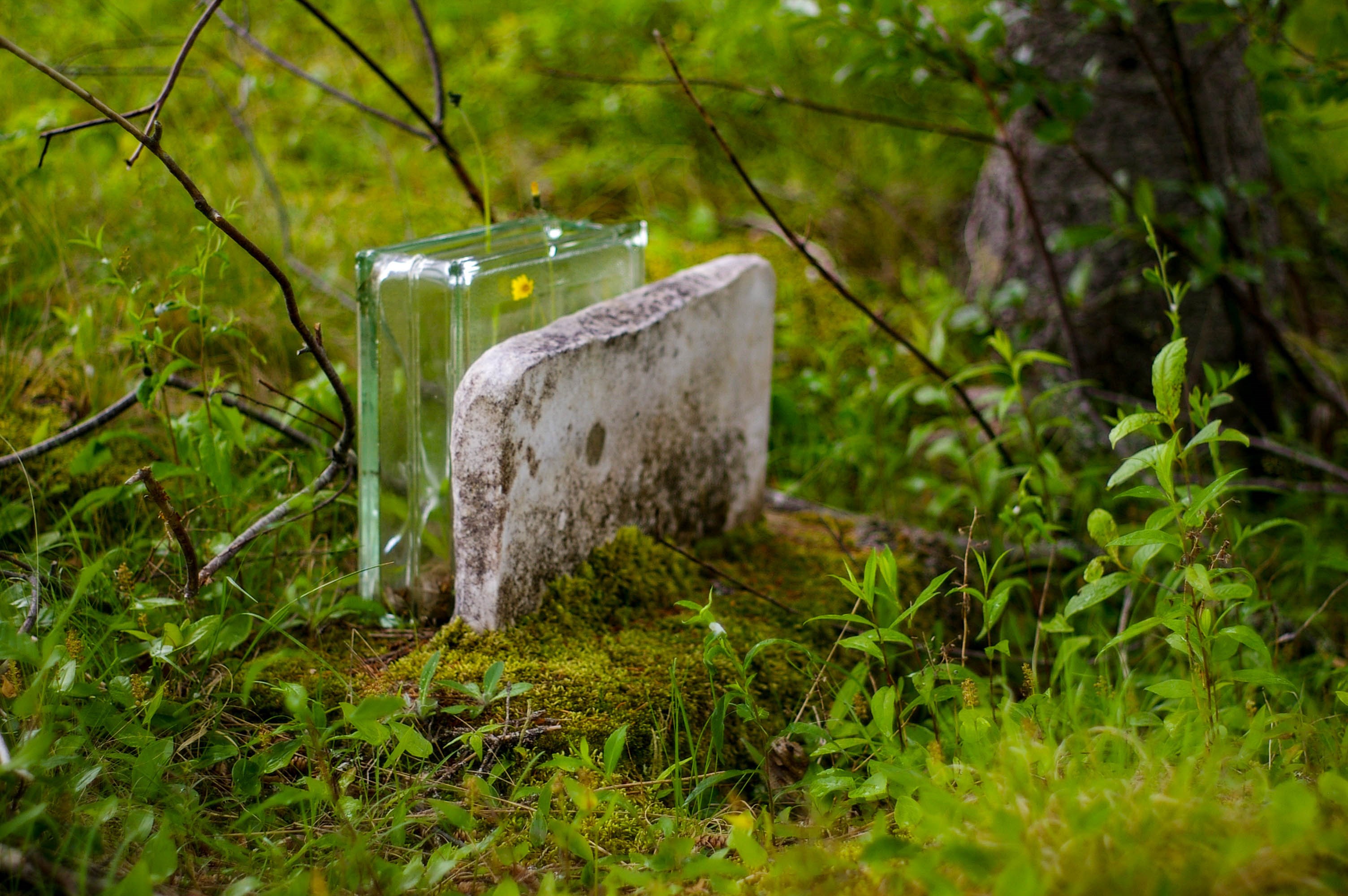
Step carefully! You never know who you might trip over!
Although the age, condition, and design of the headstones all vary considerably, one consistent motif involves the letters “Mc.” I didn’t bother to count, but I’d estimate that 80 per cent of the residents shared that patronymic prefix. Some of them (mostly McDonalds) prized the letters so highly, they had them added to the top of their markers – an “McD” taking pride of place where other monuments might feature, say, a cross. Tucked away in the highest corner, we found that one of the oldest stones had been slightly, but significantly, touched up:
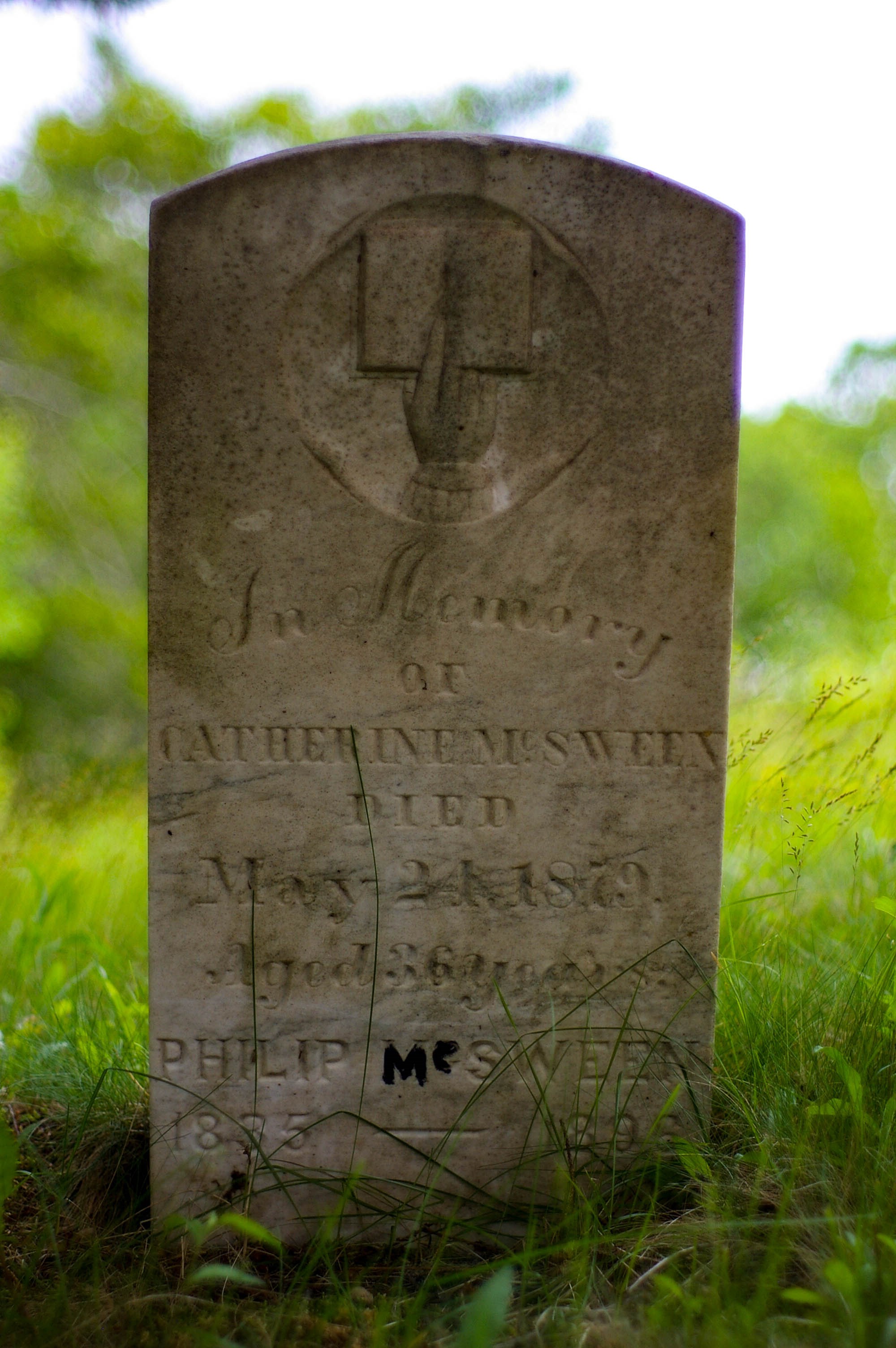
That’s McSween with an MC, and don’t ye forget it!
Sandfield also provided me with my first glimpse of Gaelic epitaphs, including “Is beannaichte na mairbh a gheibh bàs anns an Tighearna,” which means “From henceforth blessed are the dead which die in the Lord: even so saith the Spirit: for they rest from their labours” (Revelation 14:13). Can I just go on record as saying that quoting Revelation on your tombstone is plenty badass on its own. Quoting Revelation in Gaelic is a whole other level of awesome.
Some of the newer markers feature the familiar idiosyncratic images that try to indicate what the dearly beloved cherished in life: fly fishing, flowers, coffee (or tea?). These kitschy details are uncommon enough here that they don’t detract from the cemetery’s overall aesthetic...and in this case, they inspired me to seek out the Gaelic words for “fly fishing,” so it’s all good.
Another curious feature are four rusty metal crosses, their simple inscriptions facing away from the rest of the cemetery. Three of the interred are Lunds – a W., an F., and a J. – but one is a Long. How Long and the Lunds got mixed in with all the Mcs, and why they have turned their backs on their fellow Sandfieldians, is a secret they have carried to their graves.
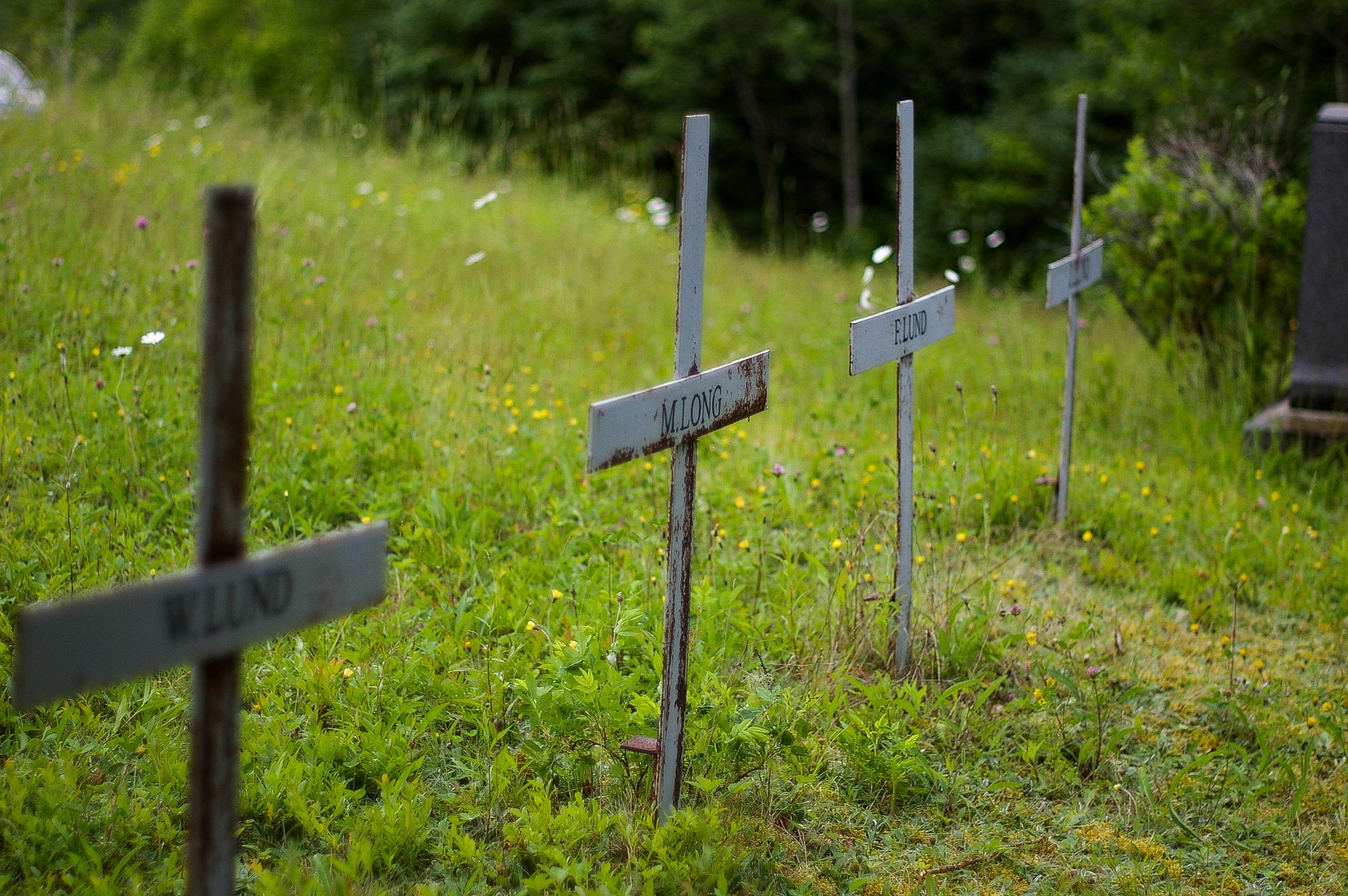
How Long did long to land a Lund...
While Whitney Fawn took pictures and I took notes, the four-year-old and the Mama parted the tall grasses in search of markers resembling chess pieces. One bishop turned out to be a queen in disgrace, her crown broken off and tucked at the marker’s base. These are not the markers of proud folks, unless their pride was in their workaday unanimity of spirit. These Longs and Lunds and ALL the McDs, from the 1870s MacDonalds to their 2002 descendants, clearly loved the simple things – including a cozy spot overlooking the Mira, where cedars grow tall and where all roads – even horror-movie roads – lead to beauty.
Scott Sharplin is a freelance writer and theatre artist, and an instructor at Cape Breton University. After growing up in Edmonton and studying playwriting in Montreal, Scott settled in Cape Breton to do the house-wife-car-dog-child thing. He is both active in, and a huge fan of, the Cape Breton theatre community. He also enjoys role-playing games, and even writes them professionally now and then. He lives in Sydney.
Whitney Fawn MacEachern was born in Virginia, and was fascinated from childhood by the creatures that live there. She spent her summers walking through the woods near her house, using field guides to identify the animals and plants she found there. During the cool winters, she whiled away many hours drawing and crafting, honing her artistic skills. Whitney now lives in New Waterford with her husband and their two Maine **** cats.

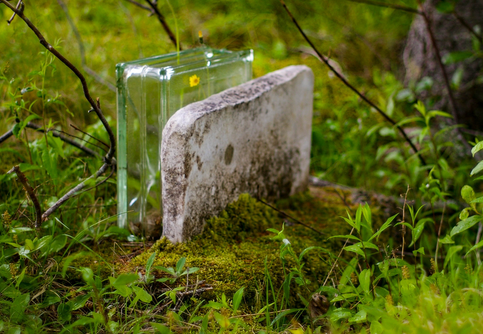



2
Log In or Sign Up to add a comment.- 1
arrow-eseek-e1 - 2 of 2 items